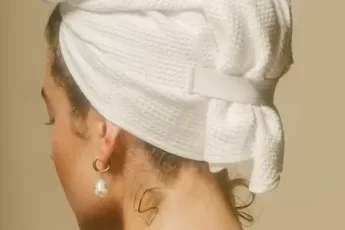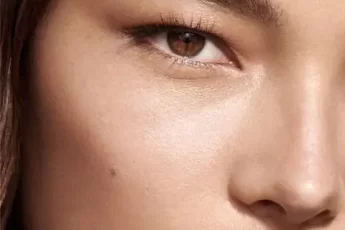Healthy, glossy hair is a priority for many of us, but achieving and maintaining it can be a challenge. Understanding the current state of your hair is a crucial part of effective haircare because identifying signs of hair damage early on can help you take the necessary steps to restore your locks to their former glory.
RELATED: Introducing TYPEBEA by Rita Ora and Anna Lahey: The Ultimate Performance-Led Haircare Revolution
Signs of damage
Hair damage occurs when the hair’s structure is compromised, leading to weakened strands that are prone to breakage, split ends, and other issues. Hair is composed of three layers: the cuticle, the cortex, and the medulla (only found in thick hair types). When the cuticle is damaged, the inner layers become exposed and vulnerable, resulting in various forms of hair damage. Signs that your hair may need some help include:
Split ends
Split ends occur when the protective outer layer of the hair cuticle wears away, typically due to excessive heat styling, chemical treatments, or mechanical damage from brushing and combing. The hair splits into two or more strands at the end, making it look frayed and unhealthy. Regular trims and proper hair care can help prevent and minimise split ends.
Breakage and shedding
While it’s normal to lose about 50-100 hairs a day, excessive hair loss or breakage beyond this can indicate damage. Breakage often occurs when the hair shaft is weakened by factors such as over-processing, lack of moisture, or physical stress. This can result in shorter hairs that break off rather than shed naturally from the root.
Dryness and rough texture
Healthy hair feels smooth and soft due to its intact cuticle layer, which retains moisture. When hair is damaged, the cuticle layer is compromised, leading to a loss of moisture and natural oils. This results in a rough, dry, and brittle texture, making the hair more prone to breakage and split ends. It also means it’s more likely to tangle and form knots. This is exacerbated by dryness, which reduces the hair’s natural slip and smoothness.
Elasticity loss
Hair should have some degree of flexibility and stretch without breaking. This elasticity is due to the hair’s internal structure, which includes proteins and moisture. When hair loses its elasticity, it becomes brittle and snaps easily when pulled. This can be a sign of protein deficiency or damage from chemical treatments, heat styling, or environmental stressors, such as sun exposure or pollution. Regular deep conditioning treatments and protein-rich hair masks can help restore some of the hair’s lost elasticity.
Haircare tips
In addition to the advice given above – to have regular trims and use conditioning masks to strengthen and rebuild hair structure – you can also consider the following:
- Limit heat use. Use heat styling tools sparingly and always apply a heat protectant before styling. Opt for air drying when possible.
- Be gentle when brushing. Use a wide-tooth comb or a brush designed for detangling. Avoid brushing wet hair.
- Eat a balanced diet. Ensure your diet includes essential nutrients like vitamins A, C, D, E, iron, and omega-3 fatty acids.
- Use oils and serums. Incorporate oils like argan, coconut, and jojoba oil into your hair care routine to nourish and repair damage.
Regularly checking the health of your hair and understanding the signs of damage can lead to healthier, more vibrant locks. By taking preventative measures and incorporating restorative practices, you can significantly improve the condition of your hair. Remember, the journey to healthy hair is ongoing, and being attentive to your hair’s needs is key.
You’ll also like this:
The Best Leave In Conditioners For Damaged Hair
11 Best Hair Oils For Every Hair Type And Concern
Going On Holiday? Here Are The Best Skin, Makeup And Hair Minis To Take With You









Leave a Comment